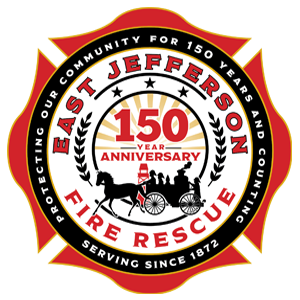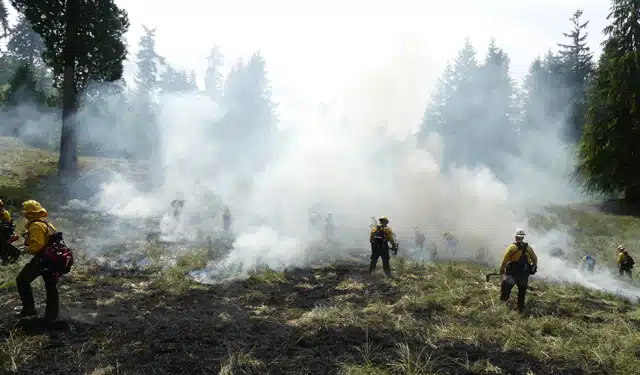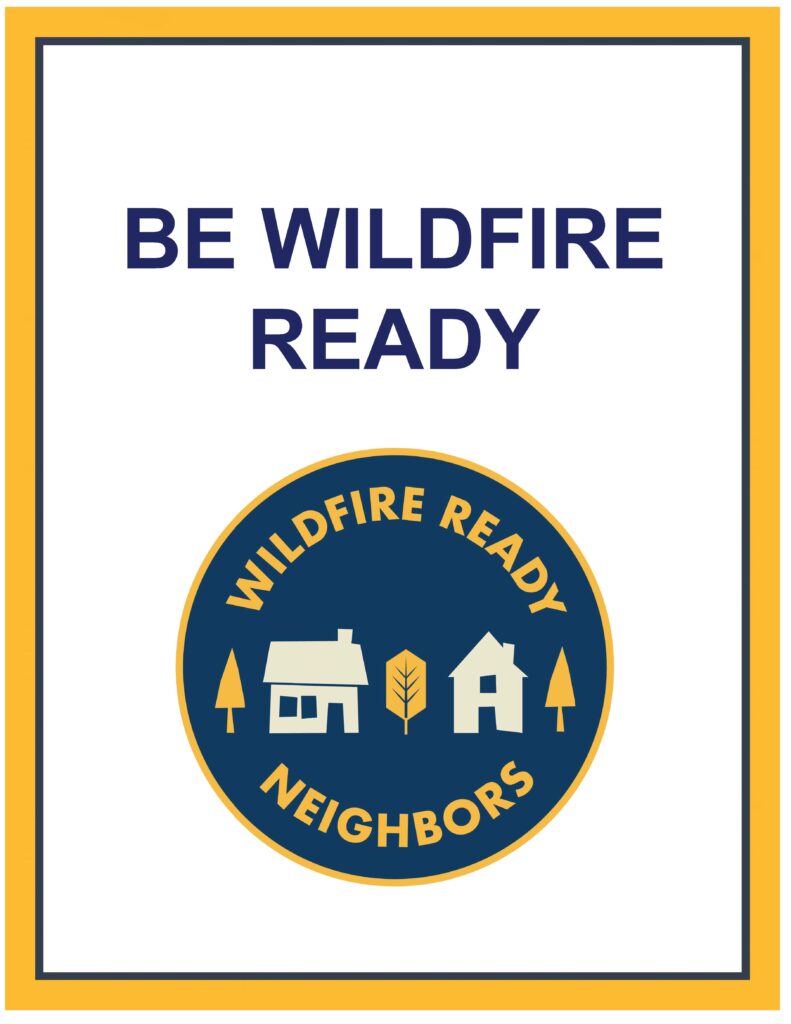2024 Wildfire Program – Chief Black at Port Ludlow EPC
Be Wildfire Ready
Whether you rent, own a vacation home, own a forested property, or just live in a home with a backyard, we offer clear steps to help you prepare for wildfires. It all starts with your community. Step one is to engage with your neighbors and develop a plan, because one of our best defenses against wildfire is collaboration.
Firewise
Keep your property lean and green to help protect your family and home.
Creating defensible space is essential to improve your home’s chance of surviving a wildfire. It’s the buffer you create between a building on your property and the grass, trees, shrubs, or any wildland area that surround it. This space is needed to slow or stop the spread of wildfire and it protects your home from catching fire from direct flame contact or radiant heat. Defensible space is also important for the protection of the firefighters defending your home.
Defensible Space Zones
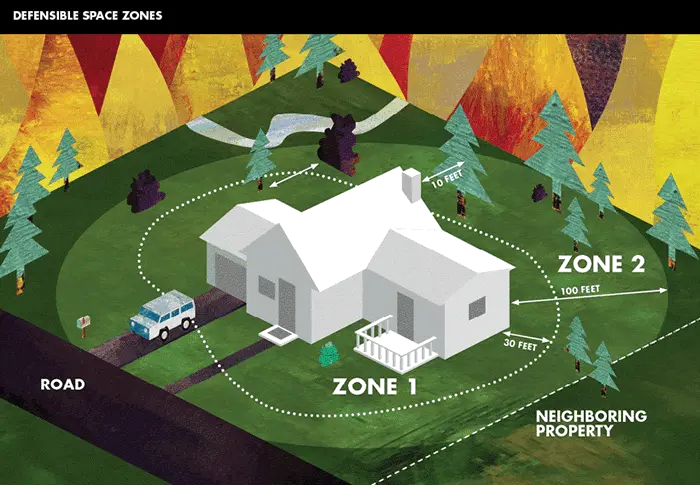
Two zones make up the required 100 feet of defensible space.
Zone 1
Zone 1 extends 30 feet out from buildings, structures, decks, etc. Remove all dead plants, grass and weeds (vegetation). Remove dead or dry leaves and pine needles from your yard, roof and rain gutters. Trim trees regularly to keep branches a minimum of 10 feet from other trees. Remove branches that hang over your roof and keep dead branches 10 feet away from your chimney. Relocate wood piles into Zone 2. Remove or prune flammable plants and shrubs near windows. Remove vegetation and items that could catch fire from around and under decks. Create a separation between trees, shrubs and items that could catch fire, such as patio furniture, wood piles, swing sets, etc.
Zone 2
Zone 2 extends 100 feet out from buildings, structures, decks, etc. Cut or mow annual grass down to a maximum height of 4 inches. Create horizontal spacing between shrubs and trees. (See diagram) Create vertical spacing between grass, shrubs and trees. (See diagram) Remove fallen leaves, needles, twigs, bark, cones, and small branches. However, they may be permitted to a depth of 3 inches.
Plant and Tree Spacing
Distance between grass, shrubs, and trees is crucial to reduce the spread of wildfires. The spacing needed is determined by the type and size of brush and trees, as well as the slope of the land. For example, a property on a steep slope with larger vegetation requires greater spacing between trees and shrubs than a level property that has small, sparse vegetation.
Vertical Spacing
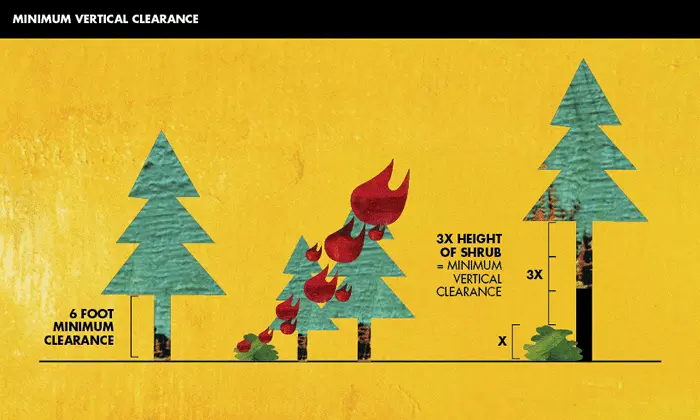
Remove all tree branches at least 6 feet from the ground and allow extra vertical space between shrubs and trees. Lack of vertical space can allow a fire to move from the ground to the brush to the tree tops like a ladder. To determine the proper vertical spacing between shrubs and the lowest branches of trees, use the formula below. Example: A five foot shrub is growing near a tree. 3×5 = 15 feet of clearance needed between the top of the shrub and the lowest tree branch.
Wildland Fire Protection tips for your Home
How We Prepare
Training happens on a daily basis at EJFR. Our career staff train every shift. Weekend and evening classes are frequently offered for our volunteer staff. Station 2 serves as our main training facility, which is where Assistant Chief Pete Brummel heads up the program.
Wildland firefighting drill preparation for summer – “Red Card Day”
Each June a “Red Card” day is held to prepare several firefighters in Jefferson County for the upcoming “wildland season.” Instructors from multiple agencies including Port Ludlow Fire & Rescue; East Jefferson Fire Rescue; Quilcene Fire & Rescue; Brinnon Fire Department; Discovery Bay Fire Department; Clallam County Fire Dist. 2; Department of Natural Resources (DNR); U.S. Forest Service and Olympic National Park and their personnel participate in what has become a 2-3 day training, generally held at the Trail Nine golf course in Port Ludlow.
Skills testing includes wildland urban interface/structure preparedness using a variety of wildland firefighting equipment; progressive hose lays; securing a water supply, utilizing portable pumps and a water tank to supply hose operations; fire line construction; entrapment avoidance and identifying escape routes, safety zones and fire shelter deployment.
Position task books outline the specific requirements that need to be met by individuals seeking to obtain a Red Card.
Olympic Peninsula fire districts are surrounded by public lands and work with federal agencies. Having local district firefighters trained to assist other agencies if/when there is a need, among other benefits, creates opportunities for training with other agencies.
